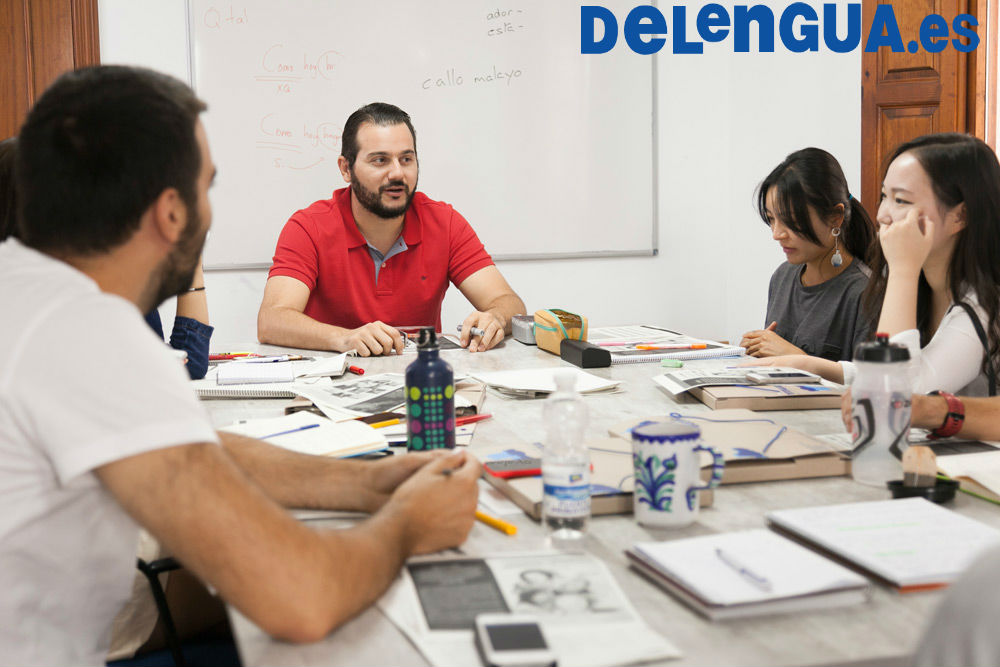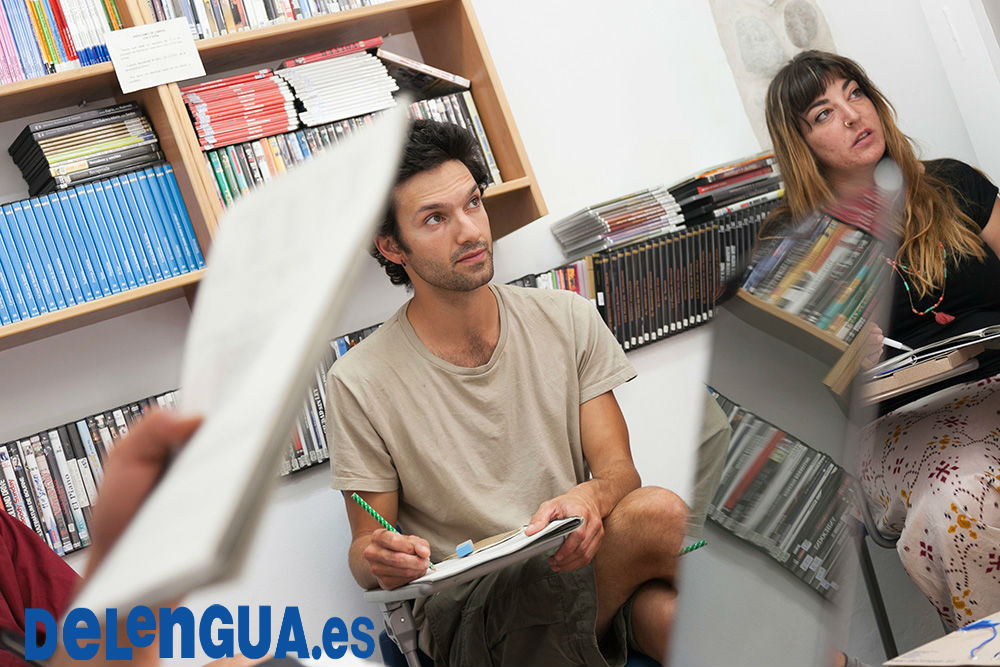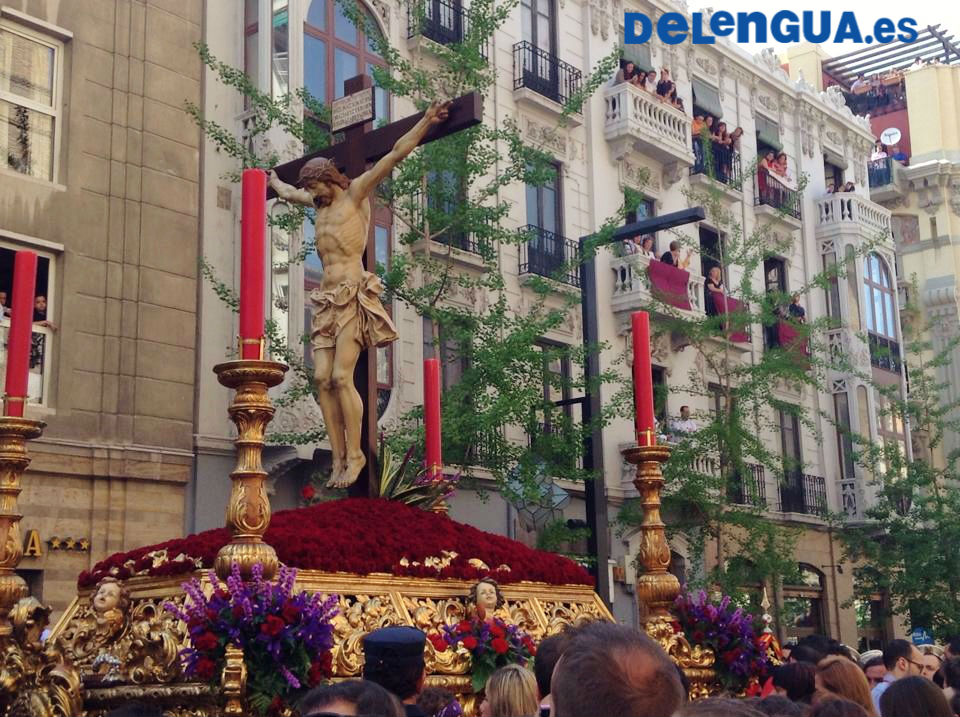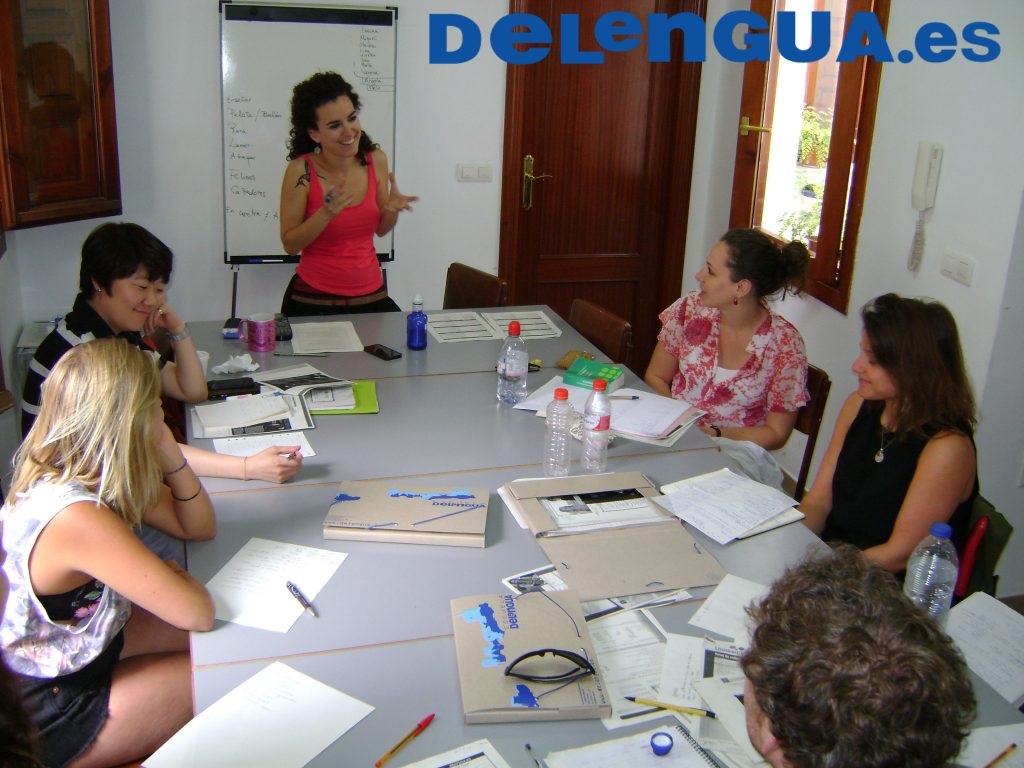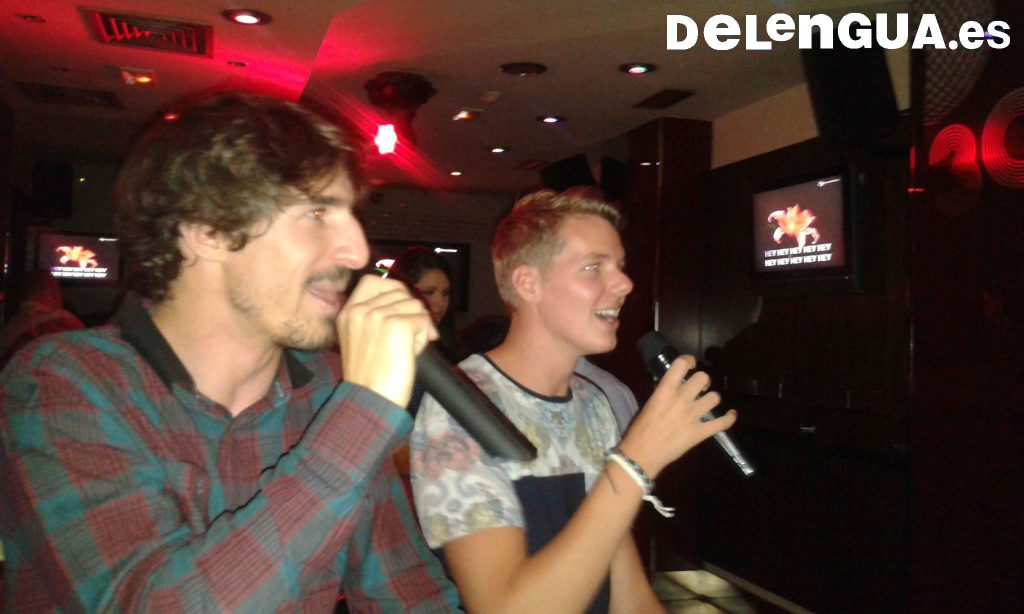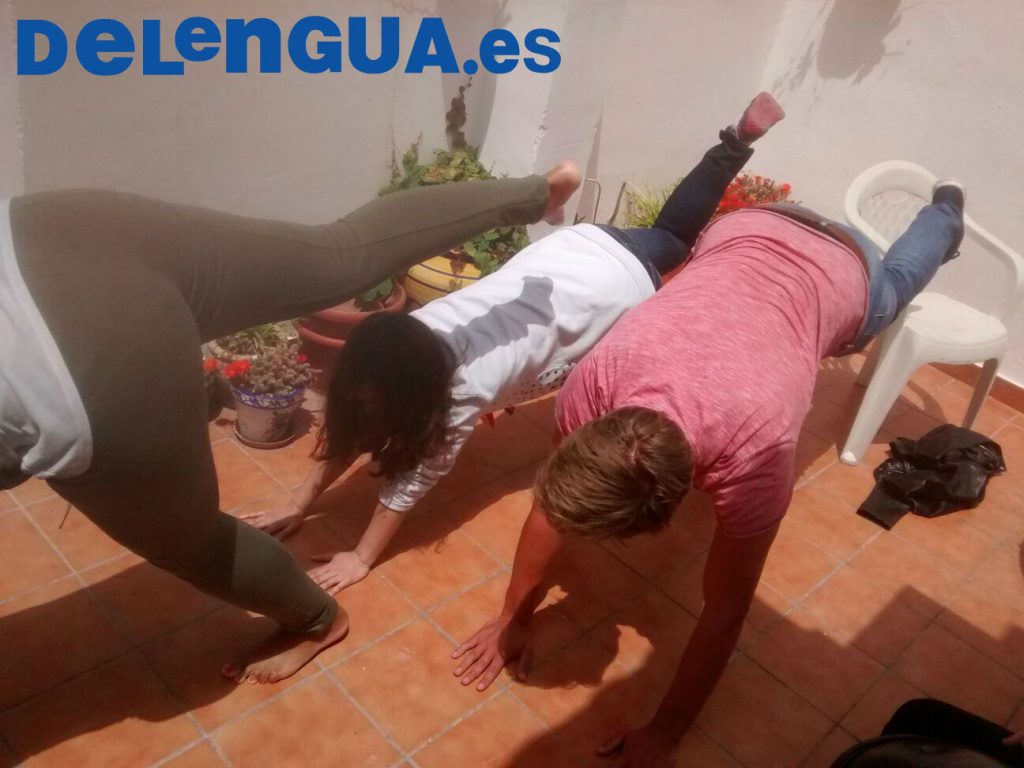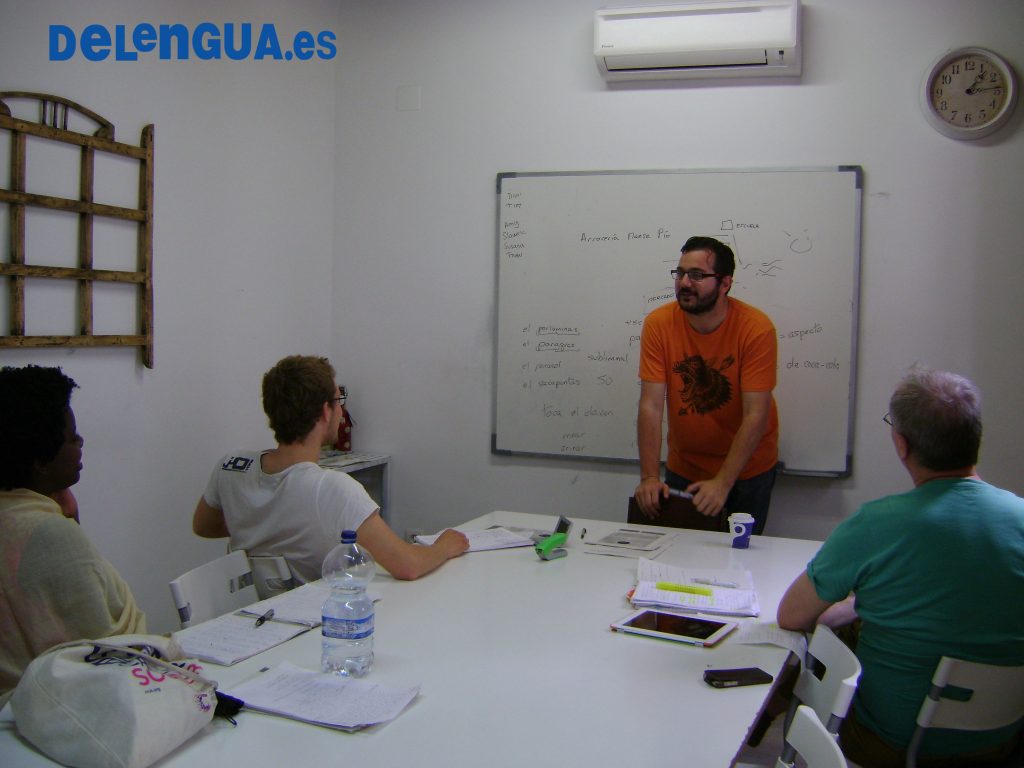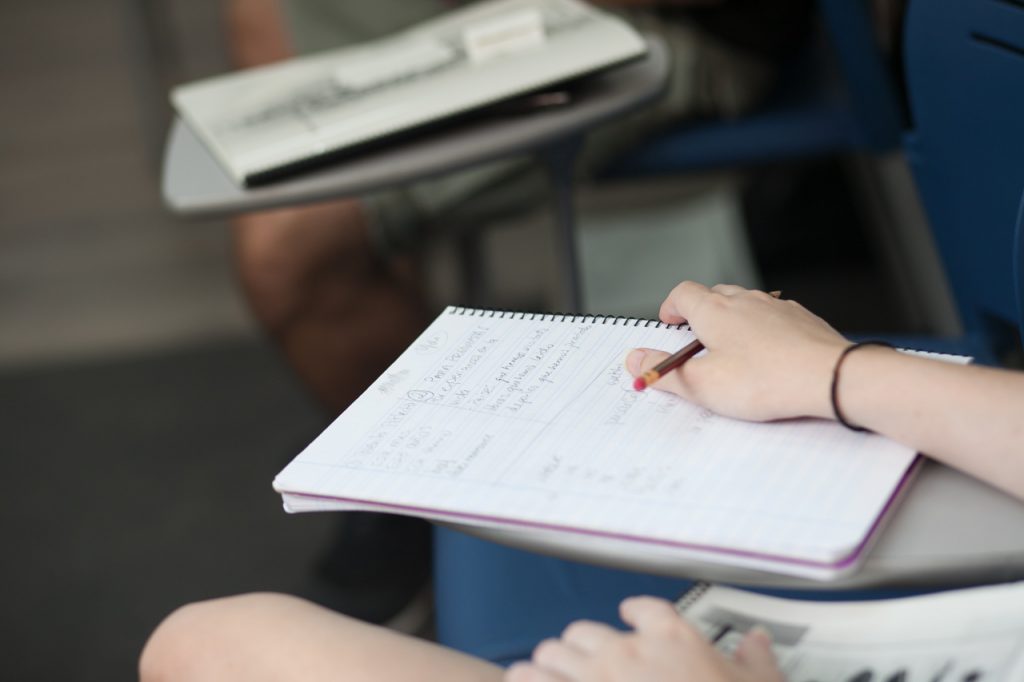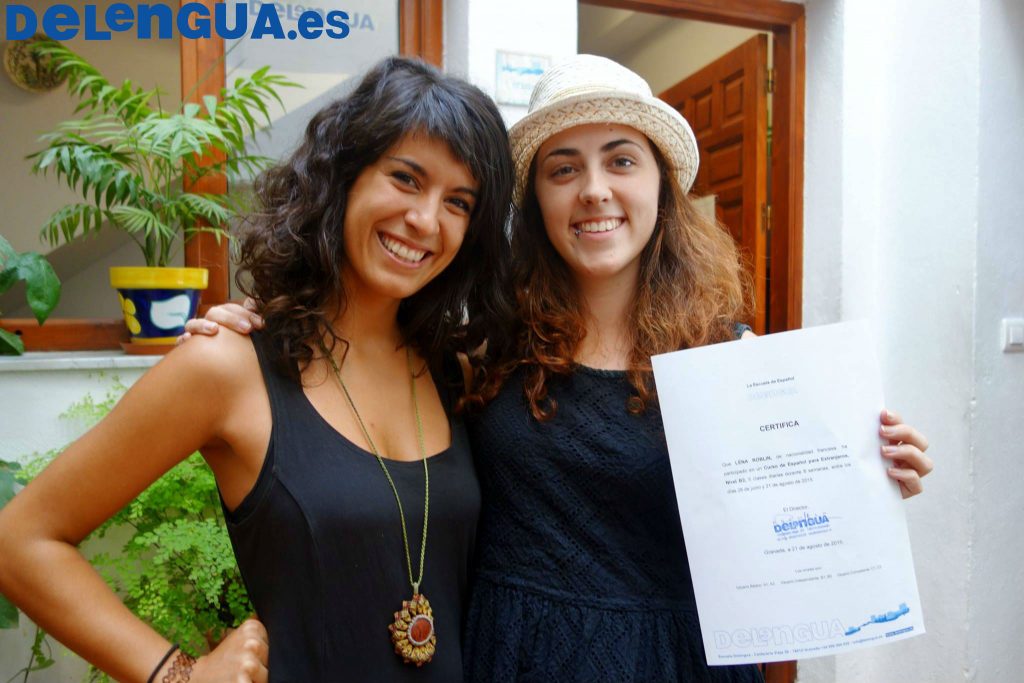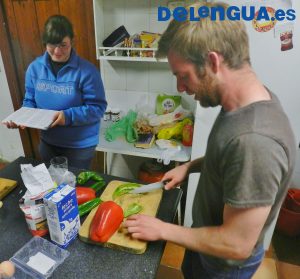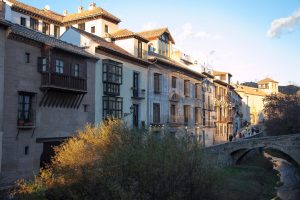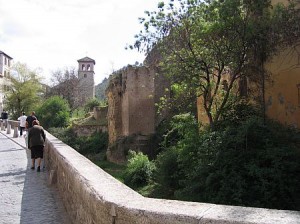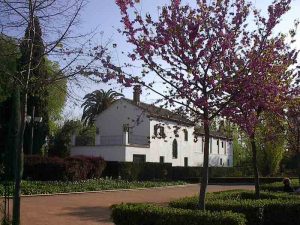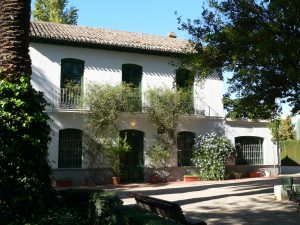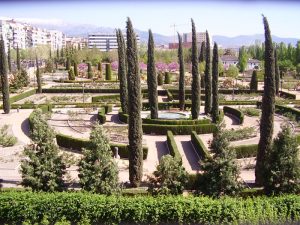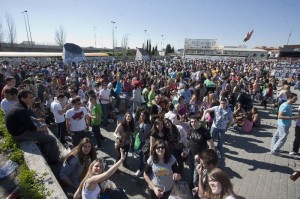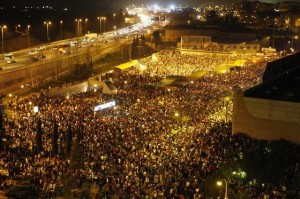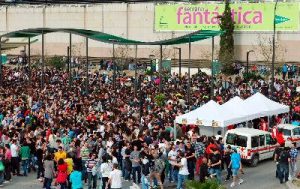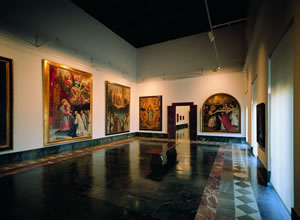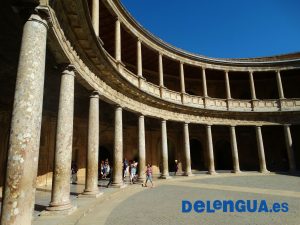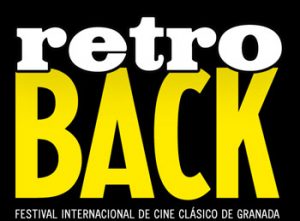| Español | Inglés | |
|---|---|---|
| El río Darro es un corto río que pasa por la provincia de Granada, en Andalucía y es un afluente del río Genil. Es el río que surte de agua a la Alhambra, y da nombre a dos calles en el centro de la ciudad de Granada: la Carrera del Darro y la Acera del Darro. El río fue el elemento mas importante de la Granada musulmana. El nombre viene originalmente de la palabra romana oro (aurus) porque la gente lavaba oro en las orillas. Los árabes cambiaron el nombre a Hadarro y después los cristianos lo renombraron Dauro, hasta que por fin se conocía como Darro. Hay cinco puentes que cruzan el Darro: Puente del Aljibillo, Puente de las Chirimias, Puente de Cabrera y Puente de Espinosa. También puedes ver los restos del Puente del Cadí, un antiguo puente árabe que fue destruido en el siglo XVII, y ahora sólo queda la base y parte del arco de herradura. Antiguamente, el río fluía por el centro de Granada pero en el siglo XIX fue cubierto por la construcción de la Plaza Nueva a causa de las inundaciones y para crear más espacio. Nace en Huétor Santillán en una zona conocida como la Fuente de la Teja, en la Sierra de la Alfaguara. Es un río pequeño pero mantiene su nivel medio incluso en épocas de gran sequía. Hasta 1990 se encontraban truchas en el río, pero ya no existen debido a la gran sequía de España de mediados de la década pasada.
El río fluye por la Carrera del Darro a partir de la plaza de Santa Ana en el centro de la ciudad de Granada, donde también se encuentra la Escuela Delengua. Con sus alrededores bonitos, la Escuela Delengua es el sitio perfecto para aprender español, desde la escuela es fácil llegar a todos los sitios mas conocidos de Granada y disfrutar de la belleza de la ciudad. |
|
The Darro is a short river that passes through the province of Granada, in Andalusia and it is tributary of the Genil river. It is the river that supplies water to the Alhambra and gives its name to two streets in the centre of the city of Granada: the Carrera del Darro and the Acera del Darro. The river was the most importnat elemnet of muslim Granada. The name originally comes from the Roman word for gold (aurus) because people used to wash gold on the banks. The Arabs changed the name to Hadarro and afterwards teh Christians renamed it Dauro, until finally it became known as Darro. There are five bridges (puentes) that cross the Darro: Puente del Ajibillo, Puente de las Chirimias, Puente de Cabrera and the Puente de Espinosa. You can also see the remains of the Puente del Cadí, an old Arab bridge that was destroyed in the 17th century, and now only the base remains and part of its horseshoe arch. In the old days, the river flowed through the centre of Granada but in the 19th century it was covered by the construction of the Plaza Nueva because of flooding and to make more space in the city. It starts in Huétor Santillán in an area known as the Fuente de la Teja, in the Sierra de la Alfaguara. It is a small river but it maintains its average level even in times of reat drought. Until 1990 trouts were found in the river, but they don’t exist anymore thanks to the great drought in Spain during this decade.
The river flows by the Carrera del Darro, from the Plaza de Santa Ana in the centre of the city of Granada, where the Escuela Delengua is also found. With its pretty surroundings, Escuela Delengua is the perfect plae to come to learn Spanish, from the school it is easy to get to all the famous sites of Granada and to enjoy the beauty of the city. |
For more information visit our website:
Search
Archives
-
Recent Posts
Tags
activities Alhambra Andalucía Andalusia Aprende español en España Aprende español en Granada Cine Español cinema cultura Cursos de espanol en Granada Cursos de español Cursos de español en España Cursos de lengua Cursos de lengua en España Cursos de lengua en Granada Delengua activities España español fiesta film flamenco Gramática Española / Spanish Grammar Granada hiking in the Sierra Nevada la lengua española Language courses language courses in Granada language courses in Spain learn Spanish learn Spanish in Granada Learn Spanish in Spain Pedro Almodóvar senderismo en la Sierra Nevada Sierra Nevada Spain spanish Spanish Courses Spanishcourses in Granada Spanish courses in Granada Spanish Courses in Spain Spanishcourses in Spain Spanish Grammar Spanish Language School the Spanish grammar the Spanish Language
